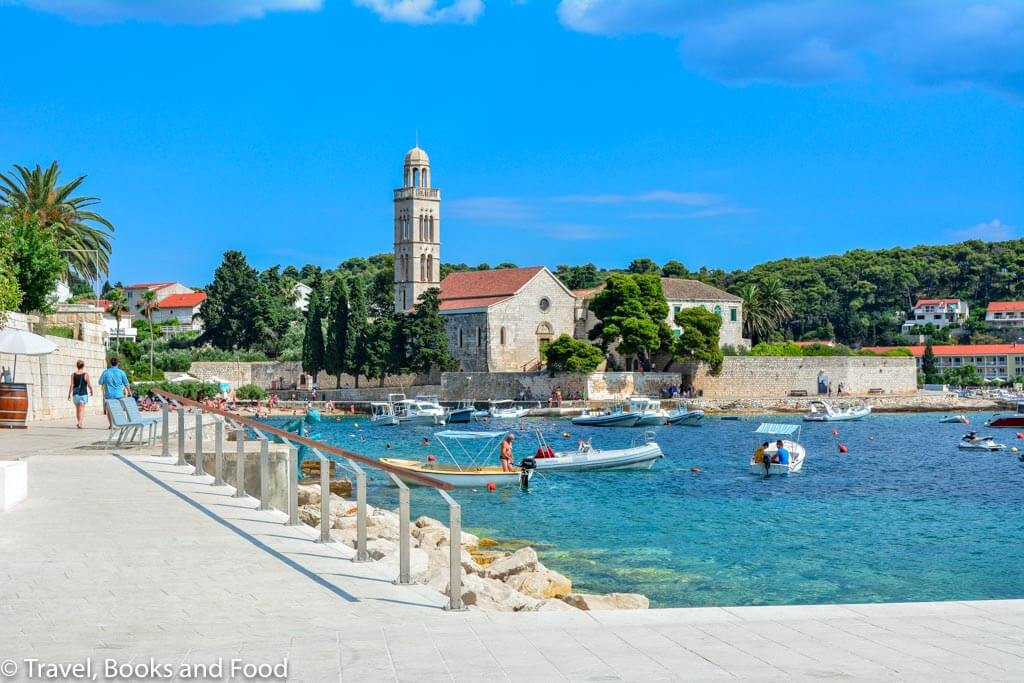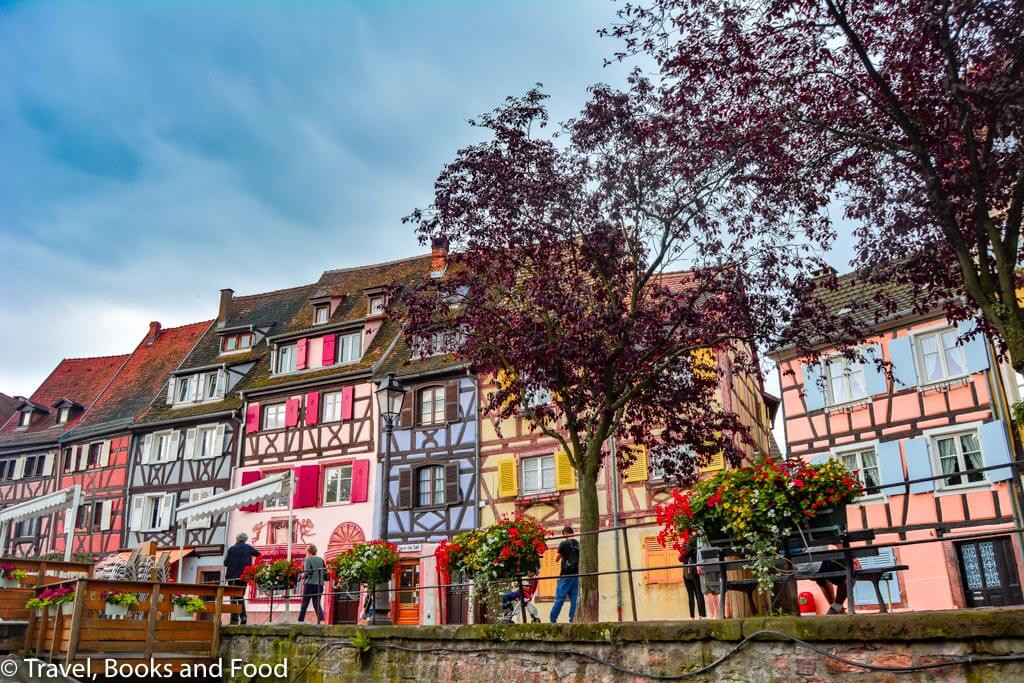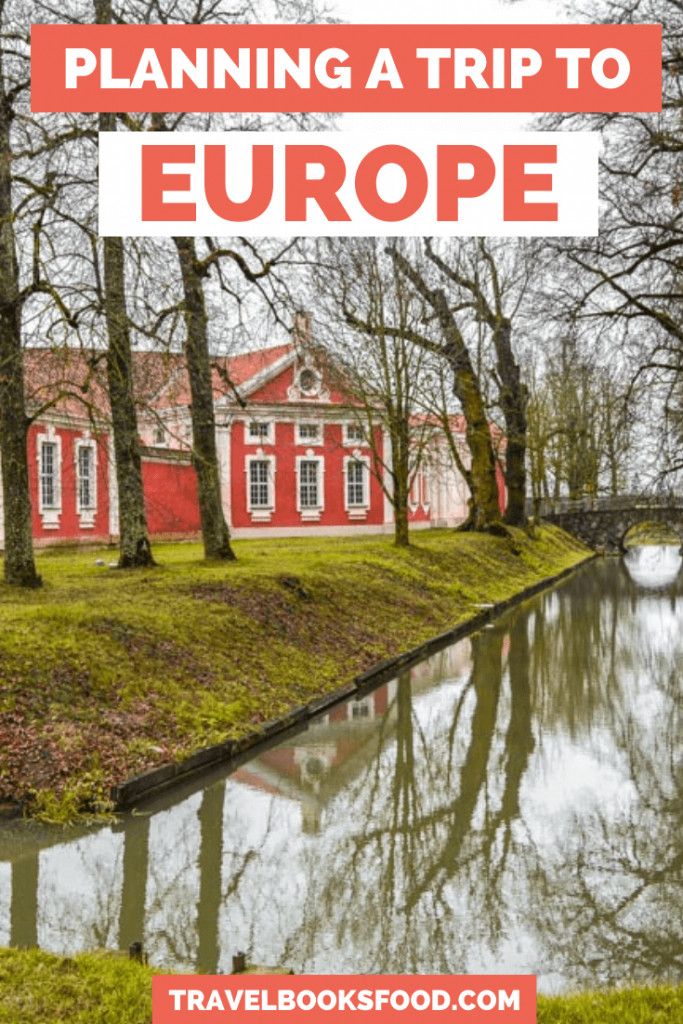Europe, a continent brimming with diverse cultures, breathtaking landscapes, and historical wonders, beckons travelers from across the globe. The dream of exploring ancient cities, indulging in culinary delights, and witnessing iconic landmarks is a powerful allure. If you’re planning a trip to this captivating continent, creating the perfect Europe Travel Itinerary is the first step towards turning that dream into reality.
Planning a European adventure can feel overwhelming, especially for first-timers. Where do you even begin? This comprehensive guide will walk you through essential steps to design an unforgettable europe travel itinerary, ensuring a smooth and enriching travel experience.
Find some inspiration for your Europe trip:
 European Destinations European Itinerary Hvar
European Destinations European Itinerary Hvar
Hvar, Croatia
Explore the stunning Croatian islands as part of your Europe itinerary.
 Turquoise waters against limestone cliffs in Algarve, one of my favorite European beach destinations
Turquoise waters against limestone cliffs in Algarve, one of my favorite European beach destinations
Algarve, Portugal
Discover the beautiful beaches of Algarve, a highlight for any Europe travel itinerary.
Key Steps to Planning Your Europe Travel Itinerary
Creating a successful europe travel itinerary involves careful consideration of several factors. Let’s break down the process into manageable steps:
1. Define Your Travel Style and Preferences
Before diving into destinations, reflect on your travel style. What kind of experience are you seeking?
- Budget: Are you a budget backpacker, a mid-range traveler, or seeking luxury experiences? This will significantly influence your choices for accommodation, transportation, and activities.
- Interests: What are your passions? History buffs might gravitate towards Rome and Athens, while art enthusiasts might prioritize Paris and Florence. Foodies might explore Italy and Spain, and nature lovers could head to Switzerland or Scandinavia.
- Pace: Do you prefer a fast-paced trip, seeing as much as possible, or a slower journey, immersing yourself in each location? A whirlwind tour might cover many countries, while a slow travel approach focuses on fewer destinations for a deeper experience.
- Travel Companions: Are you traveling solo, as a couple, with family, or with friends? The dynamics of your group will influence your itinerary choices.
Understanding your preferences will help you tailor your europe travel itinerary to your specific desires.
2. Choose Your European Destinations
Europe offers an overwhelming array of destinations, each with its unique charm. Consider these popular options when crafting your europe travel itinerary:
- Iconic Cities: Paris, Rome, London, Barcelona, Amsterdam, Berlin, Vienna, Prague – these cities are renowned for their historical significance, cultural attractions, and vibrant city life. They are often must-sees for a first-time europe travel itinerary.
- Charming Towns and Villages: Beyond the major cities, Europe is dotted with picturesque towns and villages like Colmar in France, Hallstatt in Austria, Cinque Terre in Italy, and Český Krumlov in the Czech Republic. These offer a more intimate and authentic European experience.
- Natural Landscapes: From the Swiss Alps and Norwegian Fjords to the beaches of the Mediterranean and the rolling hills of Tuscany, Europe’s natural beauty is diverse and stunning. Consider incorporating natural wonders into your europe travel itinerary if you enjoy outdoor activities and scenic views.
- Off-the-Beaten-Path Destinations: For a more unique europe travel itinerary, explore lesser-known gems like the Balkans (Croatia, Montenegro, Slovenia), the Baltics (Estonia, Latvia, Lithuania), or Portugal’s Azores islands. These destinations often offer a more budget-friendly and less crowded experience.
Research different regions and countries to identify destinations that align with your interests and create a balanced europe travel itinerary.
 Colmar, France
Colmar, France
Colmar, France
Include charming towns like Colmar in your Europe travel itinerary for a fairytale experience.
3. Determine the Duration and Pace of Your Trip
The length of your trip and the pace you choose will significantly impact your europe travel itinerary.
- Time Available: How many days or weeks do you have for your Europe trip? Be realistic about what you can achieve within your timeframe.
- Travel Time Between Locations: Factor in travel days between destinations. Moving between cities or countries can take a significant portion of your day, especially if using trains or buses.
- Days per Destination: Decide how many days to allocate to each location. Major cities like Paris or Rome might warrant 3-5 days to explore key attractions, while smaller towns might only need 1-2 days.
- Realistic Itinerary: Avoid overpacking your europe travel itinerary. It’s better to experience fewer places more thoroughly than to rush through many destinations without truly enjoying them. Quality over quantity is key to a fulfilling trip.
Consider creating a day-by-day outline to visualize your europe travel itinerary and ensure a balanced pace.
4. Book Flights and Transportation within Europe
Transportation costs can be a significant part of your Europe trip budget. Strategic booking can save you money and time for your europe travel itinerary.
- International Flights: Use flight comparison websites like Skyscanner, Kayak, or Google Flights to find the best deals. Consider flying into one city and out of another (open-jaw flights) to optimize your europe travel itinerary and avoid backtracking.
- Internal European Travel:
- Trains: Europe has an excellent train network. Eurail passes can be cost-effective if you plan extensive train travel, especially for younger travelers. Websites like Trainline or individual country’s railway websites are useful for booking.
- Buses: Buses like Flixbus offer budget-friendly travel between cities and countries. They are often slower than trains but can be significantly cheaper.
- Budget Airlines: Airlines like Ryanair, EasyJet, and Vueling offer low-cost flights within Europe. Be mindful of baggage restrictions and airport locations, which can sometimes be outside the city center.
- Rome2rio: This website is an invaluable tool for comparing transportation options (flights, trains, buses, ferries, driving) between any two points in Europe, showing durations and estimated costs.
- Seat61: For detailed information on train travel in Europe, The Man in Seat 61 website is a comprehensive resource with tips on routes, booking, and train types.
Book your transportation in advance, especially during peak season, to secure better prices and availability for your europe travel itinerary.
5. Choose Your Accommodation
Accommodation is another crucial aspect of your europe travel itinerary budget and comfort. Europe offers a wide range of options:
- Hostels: Budget-friendly, social, and great for solo travelers or backpackers. Hostels offer dorm rooms and sometimes private rooms. Websites like Hostelworld and Hostelbookers are good for finding hostels.
- Budget Hotels: Basic and affordable, offering private rooms and essential amenities.
- Mid-Range Hotels: Comfortable and well-located, providing a balance of price and quality.
- Boutique Hotels: Unique and stylish, often with local character and personalized service.
- Luxury Hotels: High-end hotels offering premium amenities and services.
- Airbnb/Apartments: Ideal for families or groups, offering more space and often kitchen facilities. Airbnb can be more cost-effective for longer stays.
- Location: Consider the location of your accommodation in relation to attractions, transportation hubs, and safety. City centers are convenient but can be pricier.
Use websites like Booking.com, Agoda, Hotels.com, and TripAdvisor to compare prices and read reviews before booking your accommodation for your europe travel itinerary.
6. Understand Visa Requirements
Visa requirements depend on your nationality and the countries you plan to visit in your europe travel itinerary.
- Schengen Area: Many European countries are part of the Schengen Area, which allows visa-free travel for short stays (up to 90 days within a 180-day period) for citizens of many countries, including the USA, Canada, Australia, and others. However, citizens of some countries, like India, may require a Schengen visa.
- Visa Application: If you need a visa, research the specific requirements of the embassy or consulate of the country where you will spend the most time or the first country you enter in the Schengen Area. The application process usually involves submitting an application form, passport, photos, travel itinerary, proof of accommodation, financial means, and travel insurance.
- Non-Schengen Countries: Countries like the UK, Ireland, Croatia, Romania, Bulgaria, and Cyprus are not part of the Schengen Area and may have separate visa requirements.
Check the visa requirements well in advance of your trip and apply in a timely manner to avoid any last-minute complications for your europe travel itinerary.
 Planning A Trip to Europe | Eurotrip Itinerary | Things to Do in Europe in 6 weeks | Places to Visit in Europe | Places to see in Europe | Travel Tips for All Travelers to Europe | Free things to do in Europe| Europe Where to stay | Europe Travel Guide | Europe Beautiful Places | Europe Travel #Europe #Travel
Planning A Trip to Europe | Eurotrip Itinerary | Things to Do in Europe in 6 weeks | Places to Visit in Europe | Places to see in Europe | Travel Tips for All Travelers to Europe | Free things to do in Europe| Europe Where to stay | Europe Travel Guide | Europe Beautiful Places | Europe Travel #Europe #Travel
7. Budget for Your Europe Trip
Creating a budget is essential for a realistic europe travel itinerary. Costs can vary significantly across Europe.
- Accommodation: Budget around €25-€80+ per night for hostels/budget hotels, €80-€200+ for mid-range hotels, and €200+ for luxury options.
- Transportation: Internal travel costs depend on distance and mode of transport. Budget for flights, trains, buses, and local transportation within cities.
- Food: Eating out can range from budget-friendly meals for €10-€20 to mid-range restaurants for €30-€50+ per meal. Consider cooking some meals yourself if staying in apartments.
- Activities and Entrance Fees: Factor in costs for attractions, museums, tours, and activities. Many cities offer city passes that can save money on entrance fees.
- Miscellaneous: Include expenses for souvenirs, laundry, internet/SIM cards, and unexpected costs.
- Daily Budget: A rough daily budget for budget travel in Western Europe might be €50-€100, for mid-range travel €100-€200+, and for luxury travel €200+ per day. Eastern Europe is generally more affordable.
Track your expenses and adjust your europe travel itinerary as needed to stay within your budget.
8. Plan Activities and Tours
While spontaneity is enjoyable, pre-planning some activities and tours can enhance your europe travel itinerary, especially for popular attractions.
- Must-See Attractions: Identify the key landmarks and attractions you want to visit in each destination.
- Book in Advance: For popular attractions like the Eiffel Tower, Colosseum, Vatican Museums, or Anne Frank House, booking tickets online in advance is highly recommended to skip long queues and ensure entry.
- Free Activities: Europe offers many free activities, such as walking tours, exploring parks, visiting churches (often free entry), and enjoying street art.
- Day Tours: Consider day tours for exploring regions outside cities or for specialized experiences like wine tasting, hiking, or boat trips. Websites like Viator and GetYourGuide offer a wide range of tours.
- Flexibility: Leave room in your europe travel itinerary for spontaneous discoveries and changes of plan. Don’t overschedule every minute of your day.
9. Pack Smart
Packing efficiently is crucial for a comfortable europe travel itinerary, especially if you are moving between locations frequently.
- Weather: Check the weather forecast for all your destinations and pack accordingly. Layers are always a good idea as European weather can be unpredictable.
- Clothing: Pack versatile clothing items that can be mixed and matched. Comfortable walking shoes are essential as you’ll be doing a lot of walking.
- Essentials: Don’t forget essential travel items like a universal adapter (Europe uses Type C and Type E/F plugs), toiletries in travel sizes, a first-aid kit, and any necessary medications.
- Luggage: Choose lightweight luggage that is easy to maneuver, especially if using public transportation. Consider a backpack or a rolling suitcase depending on your travel style.
- Laundry: Utilize laundry services at hostels or laundromats to pack lighter and refresh your clothes during a longer europe travel itinerary.
10. Stay Connected and Safe
Staying connected and safe are important considerations for any europe travel itinerary.
- Mobile SIM Card: Consider purchasing a local SIM card upon arrival or an e-SIM for European coverage. Providers like Orange and Vodafone offer plans suitable for travelers. Check if your mobile provider has international roaming options.
- Wi-Fi: Free Wi-Fi is widely available in cafes, restaurants, hotels, and public spaces in Europe.
- Offline Google Maps: Download offline Google Maps for the cities you plan to visit. This is invaluable for navigation, especially when you don’t have internet access.
- Travel Insurance: Comprehensive travel insurance is essential to cover medical emergencies, trip cancellations, lost luggage, and other unforeseen events.
- Safety Precautions: Be aware of your surroundings and take precautions against petty theft, especially in crowded tourist areas. Keep valuables secure and be mindful of scams.
- Inform Your Bank and Mobile Provider: Inform your bank and mobile provider of your travel dates to avoid any issues with card usage or phone service abroad.
Conclusion: Your European Adventure Awaits
Planning a europe travel itinerary might seem daunting initially, but by breaking it down into these steps, you can create a personalized and unforgettable European adventure. Remember to tailor your itinerary to your interests, budget, and travel style. Embrace the journey, be open to new experiences, and enjoy the magic of Europe.
For more inspiration and detailed destination guides to help you craft your perfect europe travel itinerary, explore other articles on familycircletravel.net.
 Planning A Trip to Europe | Eurotrip Itinerary | Things to Do in Europe in 6 weeks | Places to Visit in Europe | Places to see in Europe | Travel Tips for All Travelers to Europe | Free things to do in Europe| Europe Where to stay | Europe Travel Guide | Europe Beautiful Places | Europe Travel #Europe #Travel
Planning A Trip to Europe | Eurotrip Itinerary | Things to Do in Europe in 6 weeks | Places to Visit in Europe | Places to see in Europe | Travel Tips for All Travelers to Europe | Free things to do in Europe| Europe Where to stay | Europe Travel Guide | Europe Beautiful Places | Europe Travel #Europe #Travel
Find resources to book your Europe trip:
Guidebooks for Europe
Enhance your planning with detailed guidebooks for in-depth destination information.
Recommended: Best Day Trips in Europe
BOOKING RESOURCES
Start booking your dream Europe trip with these recommended resources:
- Book Your Flight: Skyscanner – for comparing international flight deals.
- Book Accommodation: Booking, Agoda, Hotels, Airbnb, Tripadvisor, Expedia.
- Travel Insurance: ICICILombard , World Nomads , SafetyWing.
- Book Tours: Viator, Getyourguide.
